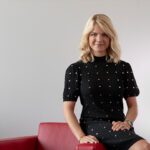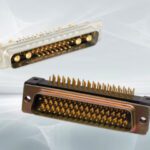Software-Driven Radio Reinvigorates Old Technology
SDR has brought about a new golden age of radio that can deliver secure, interoperable, and quality broadcast connections even under duress with the help of sophisticated miniaturized and RF interconnects.

Software-defined radio has brought one of the earliest forms of wireless communication into the 21st century, giving this traditional format new power and capabilities. Radio played a critical role in the 20th century, providing connectivity during military operations; linking first responders; giving maritime and space explorers a connection with home; and delivering news and culture to people around the world. But as is ever the case with technology, there is always room for improvement, and the merging of radio hardware with software control has made today’s software-driven radio (SDR) a much more flexible and powerful media.
Simple radio circuits are a common first engineering project, and can even be built with found objects, as famously accomplished by soldiers in World War II who built “foxhole” radios using razors, safety pins, and pencils. In sophisticated modern radios, proper hardware, including adaptable RF and microwave components, analog-to-digital converters, receivers, reconfigurable antennas, and precision interconnects, significantly improves reception, signal strength, signal-to-noise ratio, and overall performance. Merging these components with software takes radio capabilities to the next level.
With SDR, advanced radio functions are implemented using software running on a computer or embedded system. SDR systems can be reconfigured, programmed, and updated through software to support a wide range of frequencies, standards, and communication protocols. SDR is available to radio operators at all levels, from ham radio enthusiasts to commercial and government users, but SDR capabilities have had an especially profound impact on military communications, revolutionizing how armed forces plan, execute, and maintain communication networks.
“Our primary customer base is the military and defense market, and due to the nature of our product, we do little business with non-military customers,” said David Koenig, VP of product development at AirBorn. “We offer board-mount interconnects, cable assemblies, and flexible circuits for radio applications, including our R-series, Micro D, Micro Circulars, Nano D, verSI, and Unique Flexible circuit designs manufactured specifically for the customer systems and need.”

AirBorn’s Sinergy line of mini-modular connectors incorporate low voltage signal, high-speed data, and RF with plans to add power modules and potentially fiber optic interconnects, all in a single shell that can have 1, 2, 3, 4 or 5 bays. “This product allows the customer to pick the options they want and configure the connector to their needs,” said Koenig. (Shown: SMPM RF interface (.173″/4.39mm) available in cable & board-mount models.)
SDR supports secure military communications with advanced signal processing capabilities, encryption, and security features that can prevent signal jamming by enemies, reduce electromagnetic noise and other interference, and make most efficient use of the available frequency spectrum based on real-time conditions.
While software adds strategic capabilities to radio systems, hardware components can be specified at higher levels to add functionality. The military market requires the highest quality components to achieve readiness for critical technology domains. Communication systems, SDR, electronic exchanges, 5G and 6G, electronic warfare systems are integral to military operations, and SDR can scale up as new technologies emerge. Quantum computing, AI, and machine learning are priorities for future battlefield initiatives. To survive battlefield conditions, these electronics must be highly ruggedized as well as miniaturized.
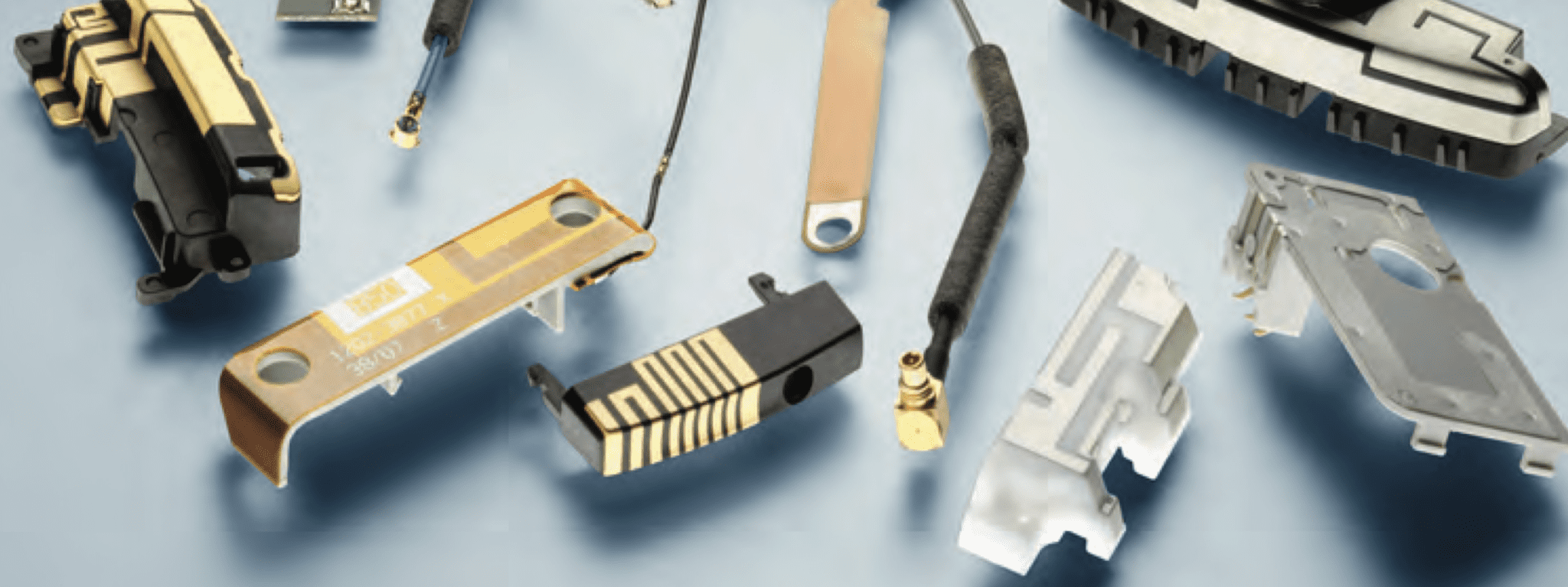
TE Connectivity offers a selection of embedded and external antenna products, to support radio functions in soldier-worn equipment and base stations.
“In my opinion, the greatest differentiator in product selection is the environment the radio needs to withstand. Heat, vibration, and shock are all factors the manufacturer must design for in military-grade components,” said Koenig. “Our products are designed to perform in harsh environments with temperatures up to 125° C, high shock, and vibration as well as high humidity and salt fog.”
He says the SInergy product helps with military packaging goals, which continue to be heavility centered on reducing equipment size and payload. “It incorporates many of the desired signal paths into one connector, which helps with SWaPc — size, weight, performance, and the newly added cost. We offer the connectors needed in a ruggedized, small package that will perform to the data rates our customers need and work in extreme environments.”
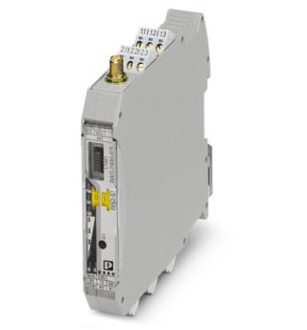
The center of SDR systems is a wireless transceiver that acts as the control center for computing operations and includes ports for antennas and interconnects. Phoenix Contact’s Radioline 2.4 GHz wireless transceiver with RS-232/RS-485 interface can be extended with I/O modules, RSMA (female) antenna connection, point-to-point, star, and mesh networks up to 250 stations, range of up to 5 km (with a clear line of sight), for worldwide use.
Hardware compatibility supports software flexibility
In January 2021, the U.S. Army approved the C5ISR/Electronic Warfare Modular Open Suite of Standards (CMOSS) Mounted Form Factor (CMFF). This document defines the U.S. Army’s goals to reduce Command, Control, Communications, Computers, Cyber, Intelligence, Surveillance, and Reconnaissance (C5ISR)/Electronic Warfare (EW) system size, weight, and power – cooling (SWaP-C) and ensure interoperability across platforms through open hardware and software. The program is part of the Army’s push to advance MOSA (Modular Open Standards Approach) goals. (Connector Supplier’s high-speed expert Bob Hult discusses MOSA in his review of the 2023 VITA event.)
CMOSS has significant implications for the continued development of SDR in its push for standardization and interoperability. Modularization allows for the integration of SDR capabilities into a wide range of mission environments and military platforms. Additionally, SDR modules from various suppliers may be used interchangeably in C5ISR/EW platforms, fostering innovation, enabling cost reductions, and facilitating successful military operations through versatility, particularly under challenging conditions.
“Intermateability is a huge concern for our military customers. They need connectors that can be easily acquired at a good price and work with existing equipment as well as new systems,” said Scott Unzen, director of marketing and market development at Omnetics Connector Corporation. Omnetics supplies miniaturized connectors for radio systems. such circular USBs used for radio hub and headset hookups used by the U.S. Army.
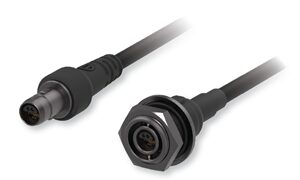
Omnetics Nano 360 USB 3.0 connectors are ruggedized, high-reliability connectors that are suitable for a wide range of military applications, including radio headsets and other soldier-worn equipment. Using both simulation and measurement, Omnetics maximized the performance for USB by optimizing the pin locations of the critical signals. This yields maximum data transmission and provides excellent crosstalk that meets the requirements of USB 3.0/USB 3.1 Gen 1. These connectors are made in the U.S.
“The military has equipment in use from various programs and generations, so they need connectors that provide a uniform upgrade path, not reinventing the wheel. Standardized, mostly circular miniaturized connectors serve their needs without locking them into a single-source product,” said Unzen. For instance, the earliest versions of NETT Warrior equipment date to the late 1990s. That program defined a soldier-worn situational awareness and battlefield communication system that includes tactical radio technologies, and a limited number of vendors were designated as NETT Warrior providers. However, a wider range of suppliers offer NETT Warrior-compatible products, which enables the Army to quickly access repair and upgrade equipment.
SDR technology can be integrated into the communication devices used in NETT Warrior systems. By utilizing SDR, the communication devices worn by soldiers can adapt to different frequencies and communication protocols as required by the mission. This adaptability is crucial in dynamic battlefield environments where communication requirements may change rapidly. Additionally, SDR can enhance interoperability between different units and allied forces by supporting multiple communication standards.
By supporting these software functions with rugged, reliable, and interoperable hardware, designers of radio equipment can support SDR for current mission needs as well as prepare for the future integration of AI and machine learning via software channels. SDR is already a seismic event in the evolution of radio. Embedded in its design is the ability to stay relevant long into the future.
Like this article? Check out our other How to Specify, Mil/Aero Market articles, and our 2024 Article Archives.
Subscribe to our weekly e-newsletters, follow us on LinkedIn, Twitter, and Facebook, and check out our eBook archives for more applicable, expert-informed connectivity content.
- Where in the World is Amphenol LTW’s Luc Kan? - April 23, 2024
- TE Connectivity’s Sustainability Efforts Pay Off - April 23, 2024
- What is a VGA Connector? - April 23, 2024
